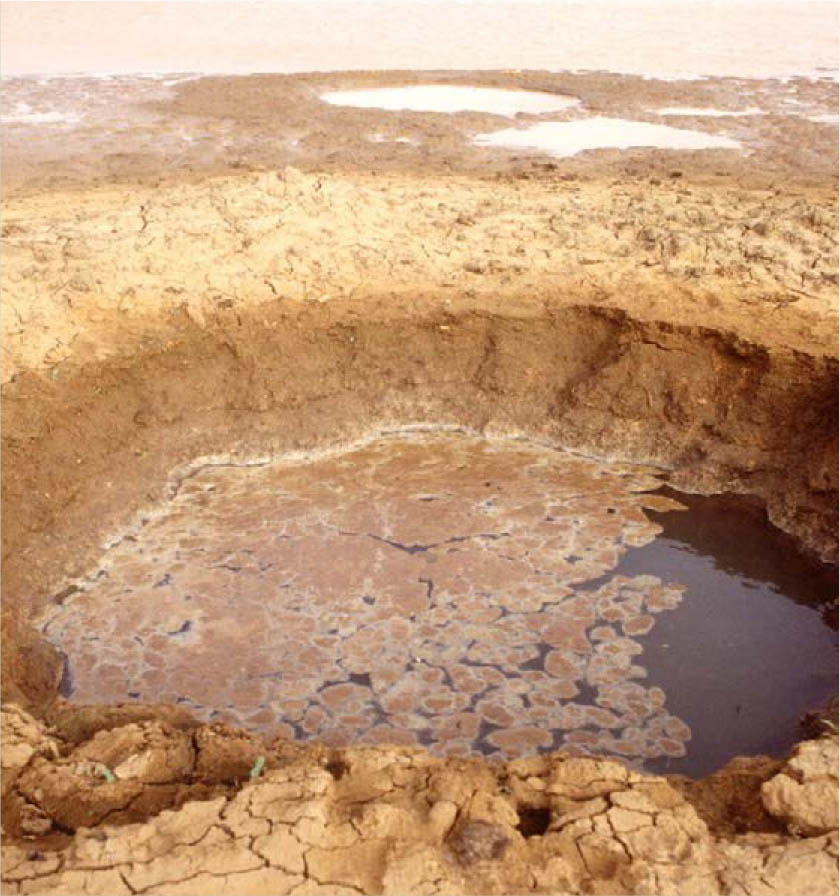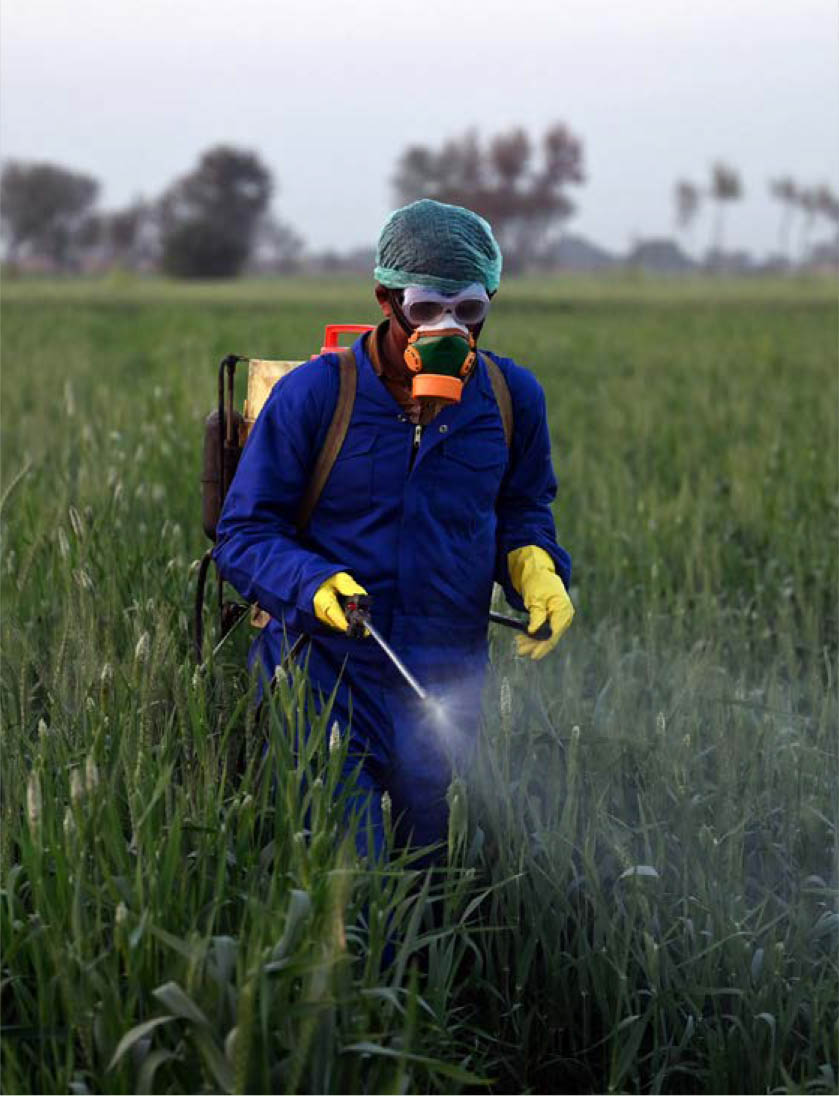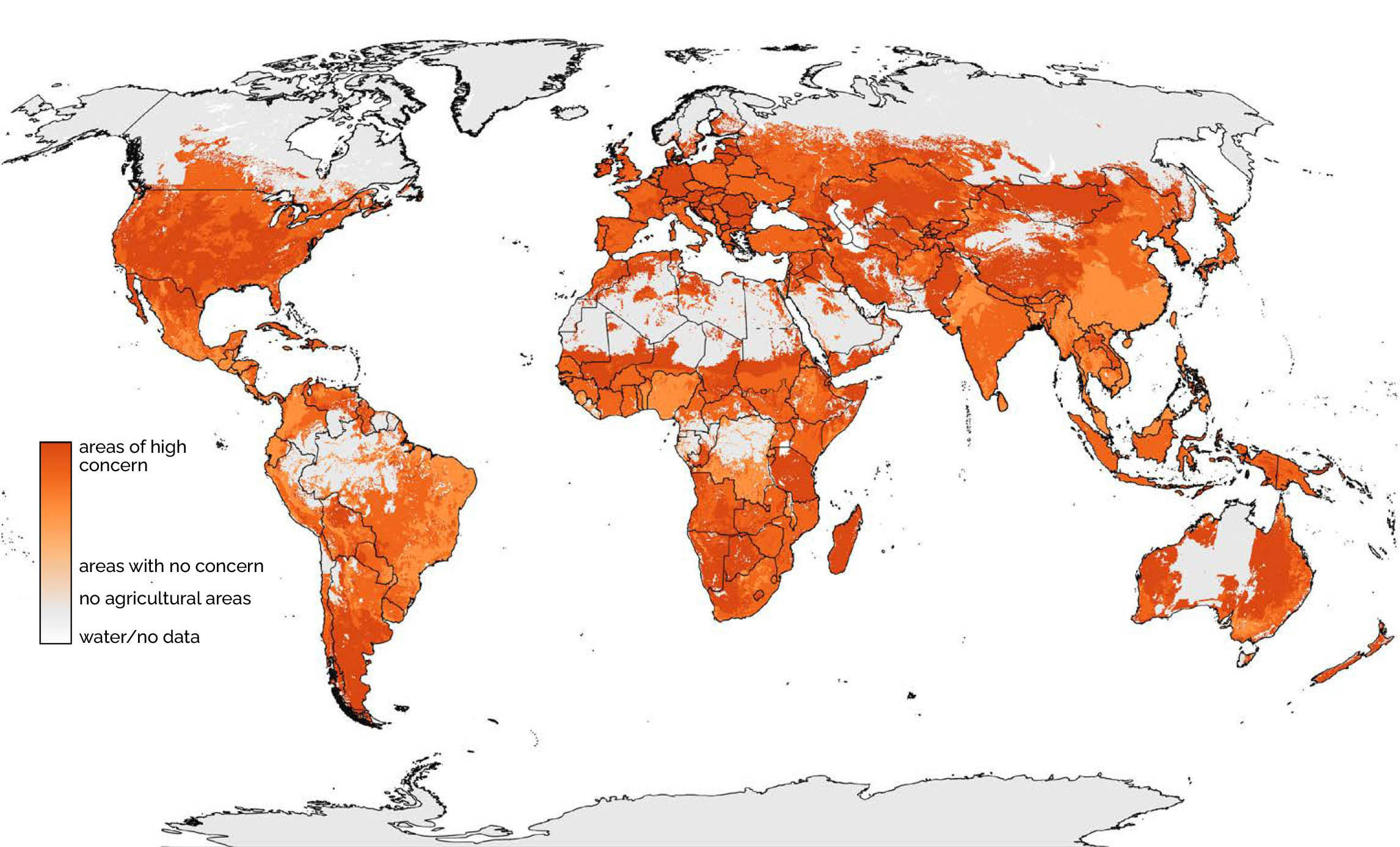1 State of land, soil and water
1.5 Water pollution from agriculture
Water pollution is a rising global crisis that directly affects health, economic development and food security. Although other anthropogenic activities such as human settlement (urbanization) and industry are major contributors, agriculture has become the dominant source of pollution in many countries. Degrading water quality is a significant threat to food safety and food security.
Currently, it is estimated that some 2 250 km3/year of effluent is discharged into the environment, 330 km3/year as urban wastewater, 660 km3/year as industrial wastewater (including cooling water) and 1 260 km3/year as agricultural drainage.
The capacity of soils to store, buffer and degrade waterborne contaminants is being exceeded by anthropogenic treatment of soils on cropland and pasture to the point where elevated levels of nitrogen, salinity and biological oxygen demand (BOD) in fresh water are widespread.


Agricultural use of reactive nitrogen synthetic fertilizer has continued to increase since 2000, from almost 81 million tonnes, to a peak of 110 million tonnes in 2017, with signs of a slight decline in 2018. Industrial fertilizer production and biological fixation of nitrogen in agriculture account for 80 percent of anthropogenic nitrogen fixation. The global growth rate of phosphorus use in agriculture is modest, from 32 million tonnes in 2000 to a peak of 45 million tonnes in 2016, followed by a marked decline. Estimates indicate the total phosphorus input to water bodies from anthropogenic use is about 1.47 million tonnes annually, with 62 percent from point sources (domestic and industrial) and 38 percent from diffuse sources (agriculture). Agricultural use of potash has risen from 22 million tonnes in 2000 to a peak of almost 39 million tonnes in 2018. The impact on freshwater eutrophication is not marked, as it is for nitrogen and phosphorus, although it contributes to salinity from run-off.
Of particular concern is pollution caused by emerging chemical contaminants, including pesticides, livestock pharmaceuticals and plastics, and potential antimicrobial resistance for which there is currently little regulation or monitoring. Map S.11 illustrates global regions of concern by pesticides.

SOME LAND AND WATER FACTS
- • Rainfed farming produces 60 percent of the world’s food on 80 percent of the cultivated land. Irrigated farming produces 40 percent on 20 percent of the land.
- • Urban areas occupied less than 0.5 percent of the Earth’s land surface in 2000. However, the rapid growth of cities (in 2018, 55 percent of the world’s population were urban dwellers) has had a significant impact on land and water resources, encroaching on good agricultural land.
- • Some 33 percent of the world's soil is moderately to highly degraded.
- • Soil erosion carries away 20–37 billion tonnes of topsoil annually, reducing crop yields and the soil’s ability to store and cycle carbon, nutrients and water. Annual cereal production losses due to erosion are estimated to be 7.6 million tonnes.
- • Globally, agriculture accounts for 72 percent of all surface and groundwater withdrawals, mainly for irrigation.
- • The SDG indicator 6.4.2 on global water stress increased from 17 percent in 2017 to 18 percent in 2018, with significant regional differences.
- • Inland fish capture totalled 11.9 million tonnes in 2019, representing 13 percent of the total global capture fisheries’ production. Just 17 countries produced 80 percent of the total global fish catch. Asia has the highest inland fish catch, representing 66 percent of the total global fish catch.

